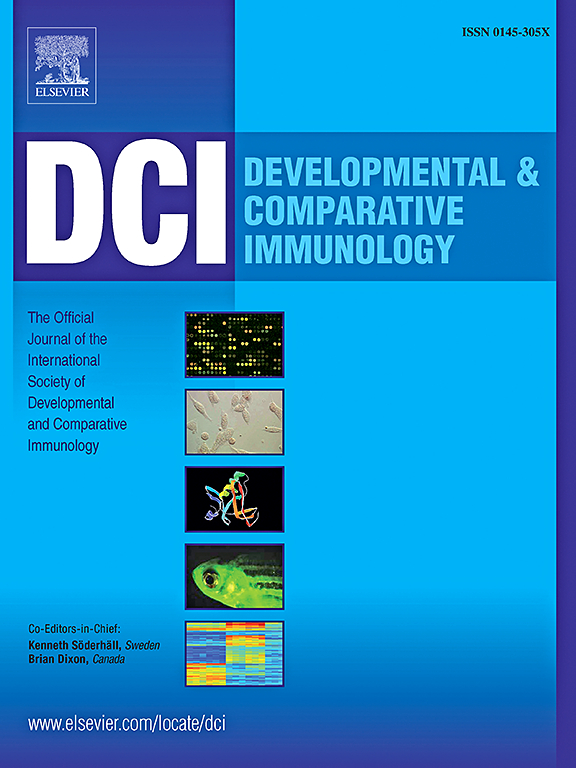Integrated microRNA study and pathological analysis provides new insights into the immune response of Ruditapes philippinarum under Vibrio anguillarum challenge
IF 2.7
3区 农林科学
Q1 FISHERIES
引用次数: 0
Abstract
Manila clam (Ruditapes philippenarum) is an important shellfish aquaculture product. The large-scale breeding of clams is often affected by V. anguillarum and causes large-scale death. However, the pathogenesis, immune response and metabolic pathway of V. anguillarum are still unclear. In this study, we found that the bacterial load in the hepatopancreas of R. philippinarum peaked at 48 h after V. anguillarum infection, and then gradually decreased, while the activity of lysozyme reached the peak at 12 h. Tissue section observation reveals that the infected hepatopancreas cells lost normal structure or necrosis. Additionally, six small RNA libraries were constructed using hepatopancreas of clams. A total of 15 differentially expressed (DE) microRNA (miRNA) were identified at 48 h after V. anguillarum infection, including 8 upregulated and 7 downregulated miRNAs. GO and KEGG enrichment results indicated the prediction of 48 known miRNAs and 127 new miRNAs, with functional annotation suggests that endocytosis pathway and bacterial recognition proteins may play key roles in immune response. The sequencing results were basically consistent with the qRT-PCR validation, indicating the accuracy of the data. This study provides a new idea to explore the immune regulation mechanism of shellfish after V. anguillarum infection, which brings important reference significance for modern immunological research.
微小RNA综合研究和病理分析为菲利宾鱼在鳗弧菌挑战下的免疫反应提供了新见解
马尼拉蛤(Ruditapes philippenarum)是一种重要的贝类养殖产品。文蛤的大规模养殖经常受到 V. anguillarum 的影响,导致大规模死亡。然而,V. anguillarum 的致病机理、免疫反应和代谢途径仍不清楚。本研究发现,鳗鲡肝胰腺中的细菌量在感染鳗鲡后 48 h 达到峰值,随后逐渐下降,而溶菌酶的活性在 12 h 达到峰值,组织切片观察发现,感染的肝胰腺细胞失去正常结构或坏死。此外,还利用蛤蜊肝胰腺构建了六个小 RNA 文库。在鳗鲡感染48小时后,共鉴定出15个差异表达(DE)的microRNA(miRNA),包括8个上调的miRNA和7个下调的miRNA。GO和KEGG富集结果表明,预测了48个已知的miRNA和127个新的miRNA,其功能注释表明,内吞途径和细菌识别蛋白可能在免疫反应中发挥关键作用。测序结果与 qRT-PCR 验证结果基本一致,表明数据的准确性。该研究为探索鳗鲡感染贝类后的免疫调节机制提供了新思路,对现代免疫学研究具有重要的参考意义。
本文章由计算机程序翻译,如有差异,请以英文原文为准。
求助全文
约1分钟内获得全文
求助全文
来源期刊
CiteScore
6.20
自引率
6.90%
发文量
206
审稿时长
49 days
期刊介绍:
Developmental and Comparative Immunology (DCI) is an international journal that publishes articles describing original research in all areas of immunology, including comparative aspects of immunity and the evolution and development of the immune system. Manuscripts describing studies of immune systems in both vertebrates and invertebrates are welcome. All levels of immunological investigations are appropriate: organismal, cellular, biochemical and molecular genetics, extending to such fields as aging of the immune system, interaction between the immune and neuroendocrine system and intestinal immunity.

 求助内容:
求助内容: 应助结果提醒方式:
应助结果提醒方式:


